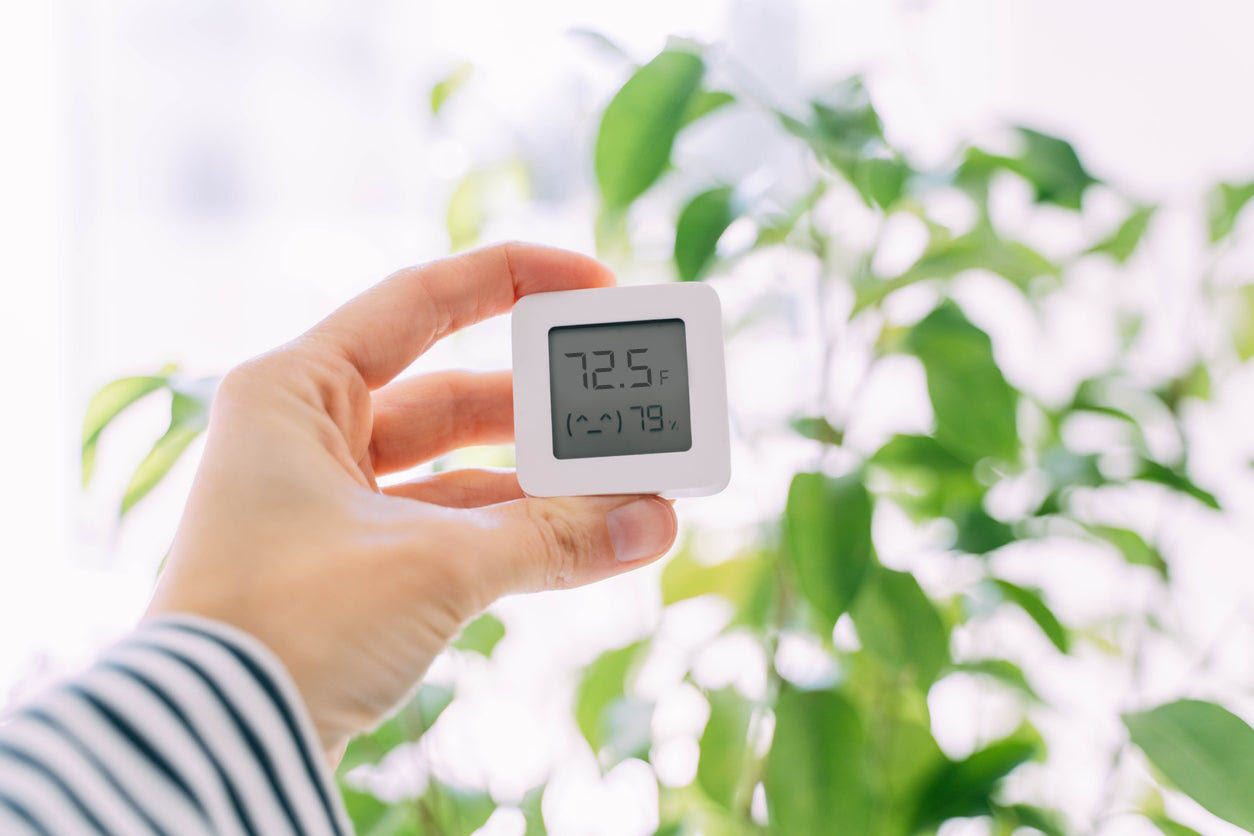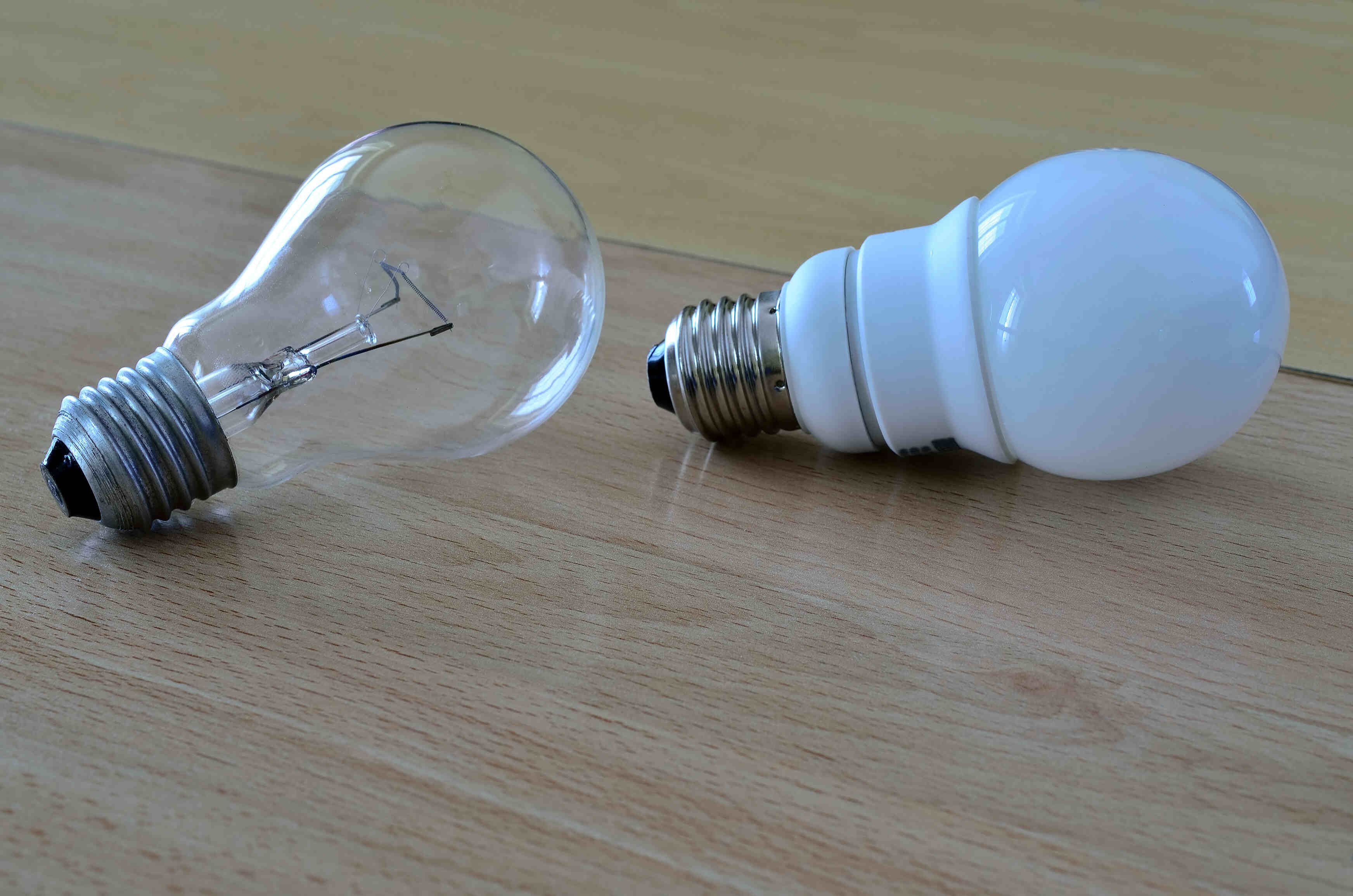Home>Furniture & Design>Outdoor Furniture>Why Could We Consider Indoor Air Pollutants More Dangerous Than Outdoor Air Pollutants?


Outdoor Furniture
Why Could We Consider Indoor Air Pollutants More Dangerous Than Outdoor Air Pollutants?
Published: January 14, 2024
Discover why indoor air pollutants may pose a greater threat than outdoor pollutants. Explore the impact on your health and learn how to mitigate risks.
(Many of the links in this article redirect to a specific reviewed product. Your purchase of these products through affiliate links helps to generate commission for Storables.com, at no extra cost. Learn more)
Introduction
When we think about air pollution, our minds often drift to images of smoggy cityscapes and industrial emissions. However, the air inside our homes and workplaces can harbor a surprising array of pollutants that pose significant health risks. In fact, indoor air pollutants can be even more hazardous than their outdoor counterparts due to a variety of factors. Understanding the nuances of indoor air quality is crucial for safeguarding our well-being and creating healthier living environments.
The distinction between indoor and outdoor air quality is not merely a matter of location; rather, it encompasses a complex interplay of factors that influence the composition and potential harm of airborne contaminants. By delving into the sources, effects, and mitigation of indoor air pollutants, we can gain a deeper appreciation for the importance of addressing this often-overlooked aspect of environmental health.
In the following sections, we will explore the disparities in air quality, delve into the sources and health effects of indoor air pollutants, examine the contributing factors, and discuss strategies for mitigating indoor air pollution. By shedding light on these critical aspects, we aim to underscore the significance of prioritizing indoor air quality and empower individuals to take proactive measures to enhance the air they breathe within the confines of their homes and workplaces.
Key Takeaways:
- Indoor air pollutants, like chemicals from household products and tobacco smoke, can be more dangerous than outdoor pollutants due to their diverse sources, prolonged exposure, and impact on respiratory and cardiovascular health.
- To improve indoor air quality, we can enhance ventilation, use air purifiers, choose eco-friendly products, and raise awareness about indoor air pollutants. Taking these steps can create healthier living and working environments.
Differences in Air Quality
While both indoor and outdoor air quality are influenced by a myriad of factors, there are distinct differences between the two environments that impact the nature and concentration of air pollutants.
- Contaminant Types: Outdoor air pollution is often associated with emissions from vehicles, industrial facilities, and natural sources, leading to the presence of pollutants such as nitrogen dioxide, sulfur dioxide, and particulate matter. In contrast, indoor air pollutants encompass a diverse range of substances, including volatile organic compounds (VOCs) from household products, formaldehyde from building materials, tobacco smoke, mold spores, and allergens from dust mites and pets.
- Concentration Levels: While outdoor air pollution can reach high concentrations in urban areas and near pollution sources, indoor air pollutants can accumulate to elevated levels in enclosed spaces, especially when ventilation is inadequate. This can result in indoor air quality that is several times more polluted than outdoor air.
- Exposure Duration: Unlike outdoor air, which individuals may be exposed to intermittently as they move between locations, indoor air is where people spend the majority of their time. Prolonged exposure to indoor air pollutants can have significant health implications.
- Control Measures: While regulatory measures and technological advancements have been instrumental in reducing outdoor air pollution, indoor air quality is largely influenced by individual behaviors and choices related to cleaning practices, ventilation, and product usage.
Understanding these disparities is pivotal in recognizing the unique challenges posed by indoor air pollution and the need for targeted approaches to address this issue. By acknowledging the specific characteristics of indoor air quality, we can implement effective strategies to minimize exposure to indoor air pollutants and create healthier indoor environments for ourselves and our communities.
Sources of Indoor Air Pollutants
Indoor air pollutants originate from a diverse array of sources within our living and working spaces. Identifying and understanding these sources is essential for mitigating their impact and safeguarding indoor air quality.
- Household Products: Many common household items, such as cleaning agents, air fresheners, and personal care products, emit volatile organic compounds (VOCs) that can contribute to indoor air pollution. These chemicals, released through evaporation, can linger in the air and have been linked to various health concerns.
- Building Materials: Construction materials and furnishings, including paint, adhesives, and pressed wood products, may release formaldehyde and other volatile substances into the indoor environment. Over time, these emissions can compromise air quality, particularly in newly constructed or renovated spaces.
- Tobacco Smoke: Smoking indoors releases a complex mixture of harmful chemicals, including particulate matter, carbon monoxide, and numerous carcinogens. Secondhand smoke poses a significant health risk, especially to children and non-smoking adults sharing the same indoor space.
- Biological Contaminants: Mold, pollen, pet dander, and dust mites are common biological pollutants found indoors. These allergens and irritants can trigger respiratory issues and exacerbate conditions such as asthma and allergies, particularly in individuals with heightened sensitivities.
- Combustion Appliances: Stoves, fireplaces, and heaters that utilize gas, oil, coal, or wood can release carbon monoxide, nitrogen dioxide, and other pollutants when not properly vented or maintained. Inefficient combustion can lead to the accumulation of harmful gases and particles indoors.
By recognizing the diverse origins of indoor air pollutants, we can adopt proactive measures to minimize their impact. From choosing low-emission products and improving ventilation to implementing smoking bans and addressing moisture issues to prevent mold growth, targeted interventions can significantly reduce the introduction and buildup of indoor air contaminants.
Health Effects of Indoor Air Pollutants
The presence of indoor air pollutants can have far-reaching implications for human health, encompassing a spectrum of respiratory, cardiovascular, and overall well-being concerns. Understanding the potential health effects is vital for recognizing the urgency of addressing indoor air quality.
Respiratory Issues: Exposure to indoor air pollutants, particularly allergens and irritants such as mold spores, pet dander, and dust mites, can exacerbate respiratory conditions like asthma and allergies. Prolonged exposure may lead to the development of respiratory infections and contribute to the progression of existing respiratory diseases.
Cardiovascular Effects: Certain indoor air pollutants, including fine particulate matter and volatile organic compounds, have been associated with an increased risk of cardiovascular issues. These pollutants can enter the bloodstream through inhalation, potentially leading to systemic inflammation, oxidative stress, and cardiovascular complications over time.
Neurological Impact: Some indoor air pollutants, such as lead, can pose neurological risks, particularly to children. Elevated lead levels in indoor environments, often stemming from lead-based paint or contaminated dust, can impair cognitive function, behavior, and overall neurological development in young individuals.
Cancer Risk: Exposure to carcinogenic substances present in indoor air, such as formaldehyde and tobacco smoke, can elevate the risk of developing certain types of cancer. Prolonged exposure to these pollutants may contribute to the initiation and progression of cancerous conditions, emphasizing the critical importance of minimizing indoor carcinogen exposure.
General Well-being: Poor indoor air quality can also impact overall health and comfort, leading to symptoms such as headaches, fatigue, dizziness, and irritation of the eyes, nose, and throat. These effects can diminish quality of life and productivity, underscoring the broad-reaching consequences of indoor air pollutants.
By recognizing the diverse health effects associated with indoor air pollutants, individuals, and communities can prioritize efforts to mitigate exposure and enhance indoor air quality. This awareness underscores the imperative of implementing measures to minimize the presence of pollutants and create healthier indoor environments that promote well-being and vitality.
Indoor air pollutants can be more dangerous than outdoor pollutants because they can become concentrated in enclosed spaces, leading to higher exposure levels. To reduce indoor air pollution, ensure proper ventilation and use air purifiers.
Factors Contributing to Indoor Air Pollution
Several interconnected factors contribute to the presence and accumulation of indoor air pollutants, shaping the overall indoor air quality and influencing the potential health risks associated with prolonged exposure.
- Poor Ventilation: Inadequate ventilation allows indoor air pollutants to accumulate, as fresh outdoor air exchange is limited. Without proper ventilation systems or natural airflow, contaminants can linger indoors, intensifying their impact on air quality.
- Indoor Activities: Certain indoor activities, such as cooking without proper ventilation, smoking, using cleaning chemicals, and engaging in hobbies involving paints or solvents, can release pollutants into the indoor environment, contributing to elevated pollutant levels.
- Building Design and Materials: The materials used in building construction and furnishings can emit volatile organic compounds (VOCs) and other pollutants, particularly in newly constructed or renovated spaces. Additionally, factors such as insulation, humidity levels, and the presence of carpeting can influence the persistence of indoor air contaminants.
- Biological Contaminants: Moisture and inadequate maintenance can foster the growth of mold and mildew, while insufficient cleaning and pet dander can contribute to biological pollutants. These factors can significantly impact indoor air quality, particularly in spaces with high humidity or poor sanitation practices.
- Occupant Density: The number of individuals occupying indoor spaces can influence indoor air quality, as human activities, respiration, and personal care products can contribute to the release of contaminants. Overcrowded or poorly ventilated areas can experience heightened pollutant levels.
- External Influences: Outdoor air quality, proximity to industrial facilities, traffic emissions, and environmental factors can indirectly impact indoor air quality. Ingress of outdoor pollutants and the infiltration of airborne particles from external sources can contribute to indoor air pollution.
By recognizing the multifaceted contributors to indoor air pollution, individuals and organizations can implement targeted strategies to address these factors and mitigate their impact. From enhancing ventilation and employing air purifiers to adopting low-emission building materials and promoting responsible indoor activities, proactive measures can effectively reduce indoor air pollution and create healthier indoor environments for all occupants.
Read more: Why Is Outdoor Wire Cheaper Than Indoor
Mitigating Indoor Air Pollution
Addressing indoor air pollution requires a multifaceted approach that encompasses proactive measures aimed at minimizing the introduction, accumulation, and impact of pollutants within indoor environments. By implementing targeted strategies and adopting responsible practices, individuals and communities can significantly enhance indoor air quality and mitigate the associated health risks.
- Enhanced Ventilation: Improving ventilation through the use of exhaust fans, air vents, and opening windows can facilitate the exchange of indoor and outdoor air, reducing the buildup of pollutants and refreshing the indoor environment with cleaner air.
- Air Purification Systems: Employing high-quality air purifiers equipped with HEPA filters and activated carbon can effectively remove airborne particles, allergens, and volatile organic compounds (VOCs) from indoor air, enhancing overall air quality.
- Source Control: Minimizing the use of products that release harmful chemicals, such as aerosol sprays, harsh cleaning agents, and synthetic fragrances, can reduce the introduction of indoor air pollutants. Opting for eco-friendly and low-emission alternatives can further mitigate pollutant sources.
- Regular Maintenance: Diligent upkeep of HVAC systems, prompt repair of leaks and moisture issues, and routine cleaning to prevent the accumulation of dust, mold, and biological contaminants are essential for preserving indoor air quality and minimizing pollutant sources.
- Smoking Restrictions: Implementing strict no-smoking policies within indoor spaces can prevent the introduction of harmful tobacco smoke, safeguarding occupants from the myriad health risks associated with exposure to secondhand smoke.
- Awareness and Education: Raising awareness about indoor air quality and providing education on the sources, health effects, and mitigation strategies for indoor air pollutants can empower individuals to make informed choices and take proactive steps to improve air quality in their living and working environments.
By embracing these mitigation measures and integrating them into daily practices and environmental management, individuals, building managers, and policymakers can foster environments that prioritize clean and healthy indoor air. Through collective efforts and a commitment to responsible indoor air quality management, it is possible to create living and working spaces that promote well-being and vitality for all occupants.
Conclusion
Indoor air pollution represents a pervasive and often underestimated threat to human health, with the potential to exert profound impacts on well-being and quality of life. The distinct nature of indoor air pollutants, their diverse sources, and the complex interplay of factors contributing to their presence underscore the need for concerted efforts to address indoor air quality.
By recognizing the unique challenges posed by indoor air pollution and understanding the multifaceted nature of its sources, health effects, and contributing factors, individuals and communities can take proactive steps to mitigate its impact. Through a combination of enhanced ventilation, air purification technologies, responsible product choices, regular maintenance, and awareness initiatives, it is possible to significantly reduce indoor air pollutants and create healthier indoor environments.
Empowering individuals with the knowledge and tools to manage indoor air quality is pivotal in fostering a culture of environmental stewardship and well-being. By prioritizing the mitigation of indoor air pollution and promoting the adoption of sustainable practices, we can cultivate living and working spaces that support respiratory health, cardiovascular well-being, and overall vitality.
As we navigate the complexities of environmental health, it is imperative to recognize the interconnectedness of indoor and outdoor air quality and the far-reaching implications of indoor air pollutants on public health. By elevating the discourse on indoor air quality and integrating targeted interventions into our daily lives and built environments, we can collectively strive towards creating indoor spaces that nurture and protect the health of all occupants.
Ultimately, the pursuit of cleaner indoor air is not only a matter of environmental responsibility but also a fundamental commitment to safeguarding the well-being of current and future generations. By embracing this commitment and enacting meaningful change, we can forge a path towards healthier indoor environments and a more sustainable, health-conscious future for all.
Frequently Asked Questions about Why Could We Consider Indoor Air Pollutants More Dangerous Than Outdoor Air Pollutants?
Was this page helpful?
At Storables.com, we guarantee accurate and reliable information. Our content, validated by Expert Board Contributors, is crafted following stringent Editorial Policies. We're committed to providing you with well-researched, expert-backed insights for all your informational needs.










0 thoughts on “Why Could We Consider Indoor Air Pollutants More Dangerous Than Outdoor Air Pollutants?”